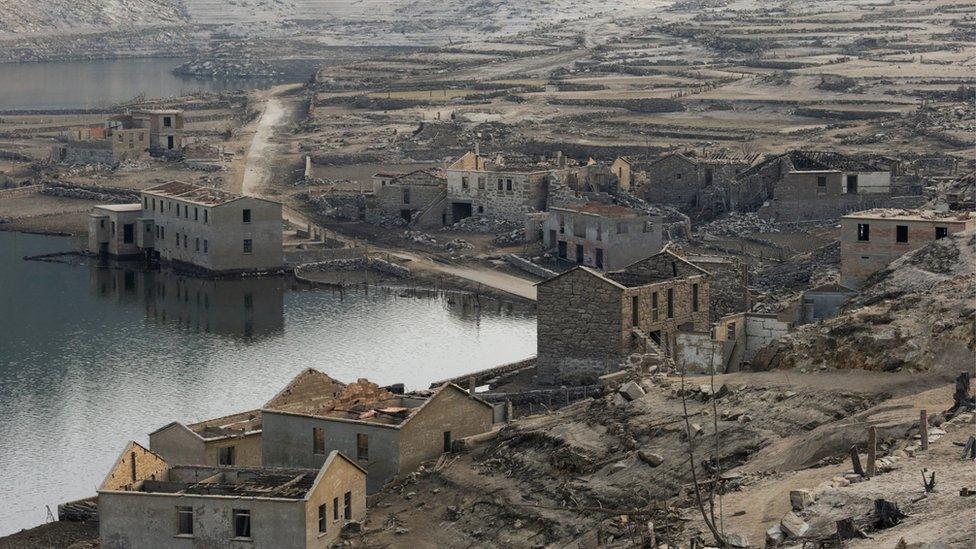'Ghost village' emerges from dried-up reservoir
- Published
- comments

Aceredo village in Spain's north-western Galicia region was flooded to create the Alto Lindoso reservoir
A 'ghost village' which was flooded thirty years ago, has re-emerged after a drought in the area.
Aceredo village in north-western Spain was flooded to create the Alto Lindoso reservoir (which is half in Portugal and half in Spain) in 1992.
The reservoir is currently at only 15% capacity which has made the old buildings visible again.
Photos show partially collapsed roofs, bricks and wooden debris that once made up doors or beams.
The view from inside a house
The floors of houses are now covered in mud - cracked by the drought - and a rusty car can been seen sitting by a building.
Why has the reservoir dried up?
Reservoirs are man-made lakes, built to collect and hold water. They supply water to homes and business and are also used for hydropower or flood protection.
Reservoirs collect and store water during times of high rainfall and are usually formed by a dam built across a river.
The inside of a house with cracked mud on the floor
Because of climate change, droughts are becoming more frequent in Spain and Portugal.
In Lobios, the area where the village has emerged, there has been a severe lack of rainfall in recent months, which has caused the reservoir to almost empty.
The lost village of Derwent
Part of Derwent Hall has been exposed by the low water levels
In Britain there were a few villages which were flooded to make way for reservoirs.
One of the most famous is the village of Derwent in Derbyshire which was flooded to form Ladybower reservoir in the 1940s.
The plan was put in place to provide water for the growing cities of Derby, Sheffield, Nottingham and Leicester.
Like Aceredo village, Derwent sometimes emerges when water levels are low.
- Published30 July 2020
- Published20 January 2020
